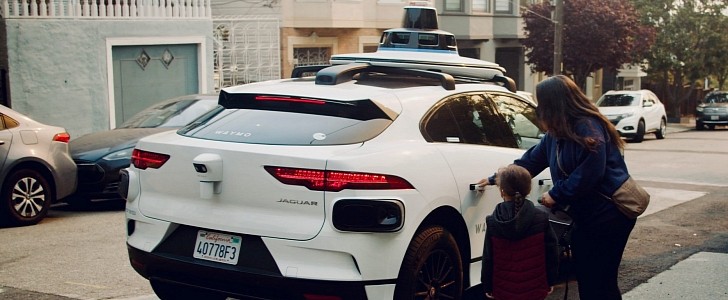What really makes a vehicle autonomous is not having to count on human supervision to execute its tasks, regardless of the area in which it can do that. This is something Mahmood Hikmet already explained in a series of videos about autonomous driving technology. That said, we finally have robotaxis available. The California DMV (Department of Motor Vehicles) granted Waymo and Cruise deployment permits for them to offer autonomous services.
These permits differ from the ones these companies previously had because they allow them to charge for autonomous trips. The autonomous testing permit they had until this point limited the compensation they could get from the public while validating their technology.
According to the California DMV press release, Cruise now can use “a fleet of light-duty autonomous vehicles” for commercial services on certain parts of San Francisco. They can operate on public roads from 10 PM to 6 AM at a top speed of 30 mph (48 kph) and can work under light rain and light fog.
Regarding Waymo, it can have its fleet of autonomous passenger cars in a few San Francisco and San Mateo parts. Its cars can run at speeds of up to 65 mph (105 kph) with the same limitations of light rain and light fog, but no time limitations as Cruise has. The difference has an interesting explanation.
Patrick McGee asked the California DMV about them. The Financial Times correspondent learned that Cruise would be able to pick up passengers without a safety driver. Waymo will have to operate with a safety driver behind the steering wheel.
Although that makes it seem that Cruise has a more advanced tech, that probably has to do with the speed and hours at which Waymo wants to operate. In other words, they have established different ODDs (Operational Design Domains), and opted for a different sort of authorization, with different goals.
Waymo will probably use the modified Chrysler Pacifica and Jaguar I-PACE for its service. Cruise is in a more delicate position: it uses modified Chevrolet Bolt EVs for the task, which makes us wonder if they have already received the new battery packs. Some Bolt EV units caught fire, and GM realized they were caused by defective batteries produced by LGES (LG Energy Solution).
As we mentioned before, regardless of the area covered by Waymo and Cruise, these are the first robotaxis in California. Waymo has had authorization for tests on public roads since 2014, and Cruise got one in 2015. They respectively obtained driverless testing permits in October 2018 and October 2020.
If the commercial use of these robotaxis goes well, we’ll probably see it expand in a few months. Other companies may also obtain deployment permits while some keep using their customers to test beta software on public roads with no authorization for that – business as usual.
According to the California DMV press release, Cruise now can use “a fleet of light-duty autonomous vehicles” for commercial services on certain parts of San Francisco. They can operate on public roads from 10 PM to 6 AM at a top speed of 30 mph (48 kph) and can work under light rain and light fog.
Regarding Waymo, it can have its fleet of autonomous passenger cars in a few San Francisco and San Mateo parts. Its cars can run at speeds of up to 65 mph (105 kph) with the same limitations of light rain and light fog, but no time limitations as Cruise has. The difference has an interesting explanation.
Patrick McGee asked the California DMV about them. The Financial Times correspondent learned that Cruise would be able to pick up passengers without a safety driver. Waymo will have to operate with a safety driver behind the steering wheel.
Although that makes it seem that Cruise has a more advanced tech, that probably has to do with the speed and hours at which Waymo wants to operate. In other words, they have established different ODDs (Operational Design Domains), and opted for a different sort of authorization, with different goals.
Waymo will probably use the modified Chrysler Pacifica and Jaguar I-PACE for its service. Cruise is in a more delicate position: it uses modified Chevrolet Bolt EVs for the task, which makes us wonder if they have already received the new battery packs. Some Bolt EV units caught fire, and GM realized they were caused by defective batteries produced by LGES (LG Energy Solution).
As we mentioned before, regardless of the area covered by Waymo and Cruise, these are the first robotaxis in California. Waymo has had authorization for tests on public roads since 2014, and Cruise got one in 2015. They respectively obtained driverless testing permits in October 2018 and October 2020.
If the commercial use of these robotaxis goes well, we’ll probably see it expand in a few months. Other companies may also obtain deployment permits while some keep using their customers to test beta software on public roads with no authorization for that – business as usual.
Sooo.... the DMV press release isn't v clear so I clarified with a few people:
— Patrick McGee (@PatrickMcGee_) September 30, 2021
Waymo can have paying passengers, but still has to operate its AVs with a safety driver.
Cruise *can* pick up ppl without a driver - a much bigger deal - albeit in limited areas from 10pm and 6am https://t.co/nziTR6l7K2















